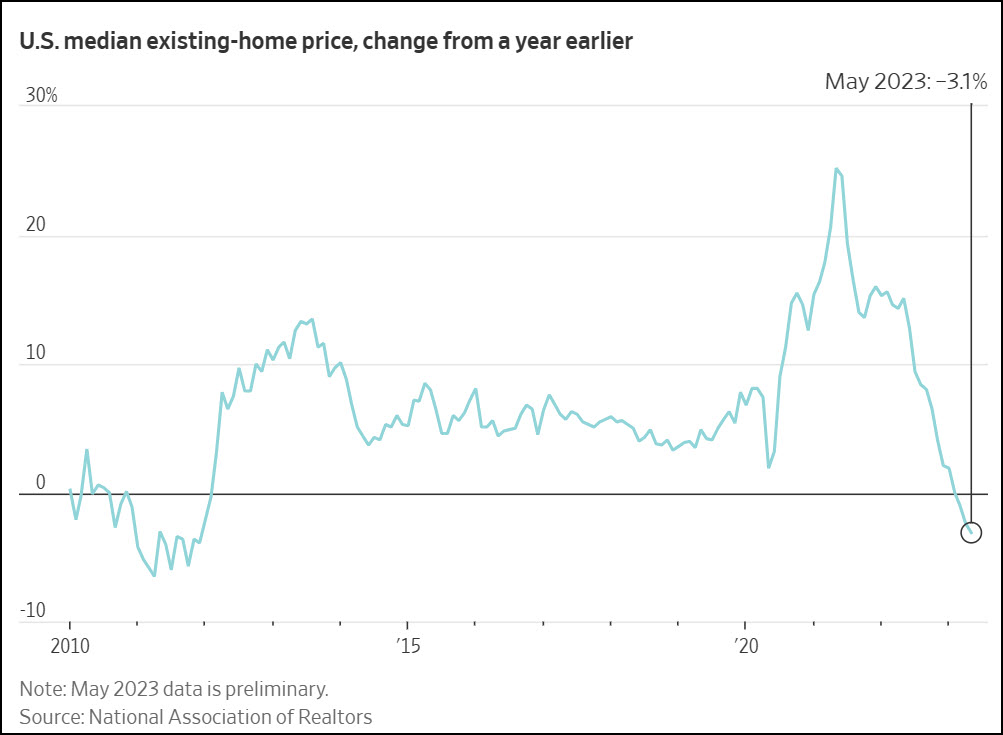Inflation is being crushed from the system by vastly larger forces of deflation that have been lurking for decades. Although we might have expected the trillions in funny money that were force-fed into the U.S. economy during the covid era to have a longer-lasting effect on prices, inflation never had much of a chance. With real and nominal mortgage costs rising, home prices have begun to fall sharply, along with rents, used-car prices, gasoline and even some basic grocery items such as milk and eggs.
Real estate is the 800-pound gorilla, though, because it is the chief source of loans that are destined to implode. This is particularly ominous for the commercial sector, since even the sky-high rents that still obtain in New York City, for one, are proving insufficient to service borrowing costs. Residential real estate will not be far behind, however. The median price for existing homes fell 3.1% in May, to a still-pumped $396,100, from a year earlier. We have some catching up to do with Germany, though, where even higher mortgage rates and official recession have caused home values to fall by a record 6.8% year-over-year.
The 800-pound gorilla will ultimately be dwarfed by King Kong himself as the biggest cities in America spiral toward economic doom. This will be a key feature of the Second Great Depression, which awaits only an end to the nutty rally on Wall Street to commence. A very run-down San Francisco seems likely to lead the pack, but don’t expect New York, Chicago, L.A. et al. to fare much better over the long run. The cities will collapse economically on three levels: above ground (i.e., skyscrapers); at ground level (virtually all amenities, from hot dog carts to concert halls); and below ground (subways, with fixed costs that include $90,000 retirement packages for even the most menial jobs.) For more on this, click here to access the interview I did last week with Howe Street’s Jim Goddard.
*********



